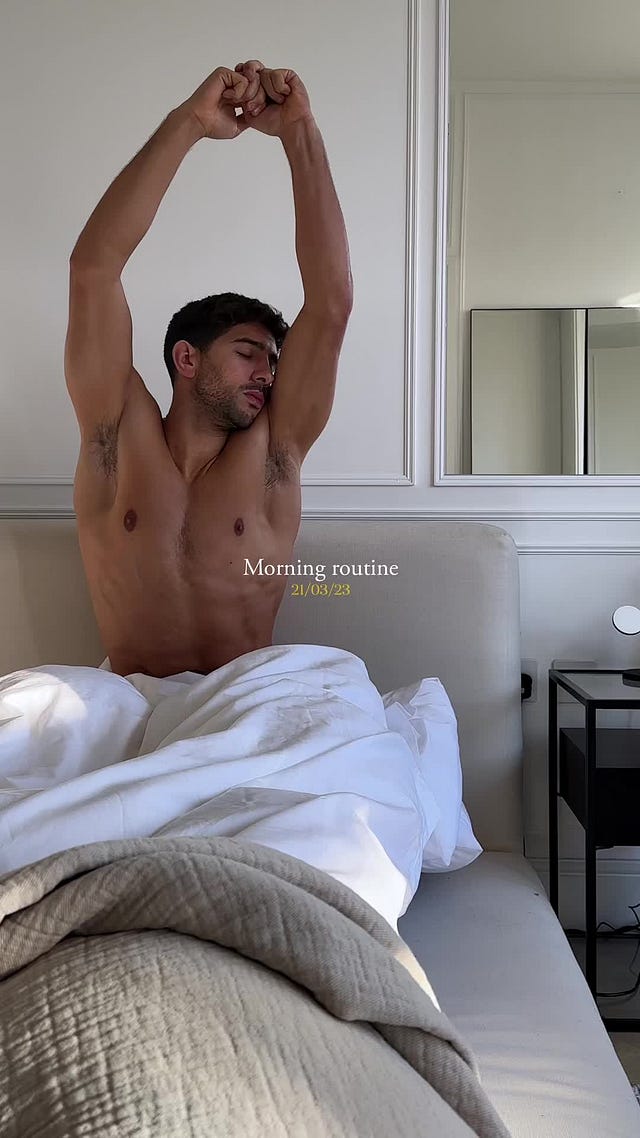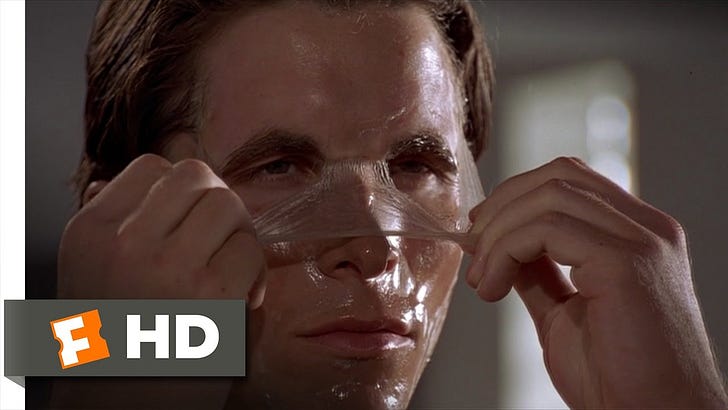Last week, I went to the 25th anniversary screening of American Psycho as part of the Tribeca Film Festival. I’ve seen American Psycho many times over, both in whole and in chopped up highlights reels. But this was my both my first full viewing in a number of years, and my first time seeing it on the big screen. The main draw to this particular showing was not just the opportunity to see it in the theater, but that it included a Q&A with the director, Mary Harron.
Harron had a lot of prescience in making American Psycho. She knew that Christian Bale was the only actor to play Patrick Bateman, against the wishes of the studio execs who fought her so hard on the casting that they fired her and Bale, though they eventually brought them back (they wanted Leonardo DiCaprio in the role which is the most insane idea I’ve ever heard). What Harron did not, and perhaps could not, have predicted is that the audience would not merely accept the Patrick Bateman she and Bale created, they would come to emulate him.
American Psycho is a period film, and like all period films, it is both a reflection of its setting and the time in which it was made. The film was released in 2000 and based on the 1991 Bret Easton Ellis novel of the same name, with the story itself set in 1987. The film adaptation is a late Clinton-era, pre-9/11 view of the 80s, Harron shared during the Q&A conducted by Hasan Minhaj. That is to say, at the time, she believed the Wall Street, greed is good guys they were satirizing were dinosaurs who would not survive the Y2K. Imagine that.
Watching American Psycho through the lens of 2025 is very different than watching it in 2000, or even during the 2010s, when I first watched it in college. Today, Patrick Bateman’s now infamous morning routine, one of the film’s most referenced scenes, is impossible to see as anything but a prototype to the numerous get-ready-with-me, morning routines videos that are now standard fare on YouTube or TikTok. Like Bateman, those influencers also carefully list the products they use to keep their skin looking youthful, the disciplined fitness routines they follow to remain trim (except they’d probably mention their protein intake and call it self-care today), all while showcasing their aspirational apartments.

 Tiktok failed to load.
Tiktok failed to load.Enable 3rd party cookies or use another browser
The difference is that, at the end of his routine, Patrick Bateman says the quiet part out loud: that his carefully crafted visage, built on a diet of meticulous exercise and skincare, is a mask for his hollow interior. Today, when we see someone espouse an obsession with their appearance through exercise and skincare, we view it as a sign of virtuous rigor worthy of celebration rather than questioning its moral vacuousness.
Patrick Bateman’s choice in interior design also feels right at home in 2025. His Upper West Side apartment is, like Patrick Bateman himself, beautiful but completely sterile. It’s built around white walls, a stainless steel kitchen, and Mies van der Rohe Barcelona chairs. The few spots of color come from a Les Mis poster.1 It looks like the kind of soulless apartment Kendall Roy might inhabit on Succession.2
And it also calls to mind the stark backdrop of many a succesful YouTuber. Watching the camera pan over his sterile apartment, I thought of the influencers caught in a lawsuit over the creative ownership of a sparse, beige aesthetic so commonplace it seems impossible to identify it to one person (well, maybe three, that is Kim and Kanye and their designer Axel Vervoordt). Today’s aspirational design has turned to warm tones of beige and cream rather than a late-80s stark black and white, but it’s the same strict adherence to a few key signifiers of status amid extremist minimalism, lest any signs of individual human quirks seep through.
The term “yuppie” has fallen out of favor since American Psycho’s time, so much so that seeing “die yuppie scum” splashed on the wall in a critical scene was maybe the one dated part of rewatching it. But maybe that’s because the yuppie lifestyle became so mainstream it no longer needs to be labeled. The movie’s endless descriptions of yuppie restaurant food, like peanut soup and red snapper with violets and pine nuts, don’t sound quite as nice as more contemporary flavors like lemony garlic miso gochujang brown butter pasta. But it is the same ethos where we seek constant stimulation in the form of more and more flavor, and hustling for rareified tables is its own sport.
I don’t mean to say that any TikToker who posts a morning routine is a rampant misogynist serial killer a la Patrick Bateman. I keep those morning routine videos churning by watching them too after all, and I’m as likely as anyone to spend $8 on a miso brown butter cookie. But the world the movie lampoons, where rampant consumerism can be construed as an unmitigated good, didn’t merely survive the Y2K, it’s come back stronger than ever. We wouldn’t have a whole ecosystem of influencers if we didn’t also have audiences begging someone to tell us what to buy.
Patrick Bateman is very clear on why he partakes in these things: “Because I want to fit in,” he hisses to his girlfriend Evelyn, played by Reese Witherspoon in an underrated performance.
Underneath it all, many influencers and their audiences share that same desire to fit in. How often have we heard phrases like “what are we wearing this season” to the point that they have become both a rallying cry and a cry for help. “One reason why Christian’s performance is so great is that Bateman is fantastically insecure,” said Harron. “And even though he’s very other, and he’s kind of a monster in that way, he does have this incredible insecurity that everybody can share, can can identify with.”
 Tiktok failed to load.
Tiktok failed to load.Enable 3rd party cookies or use another browser
The discomfort that comes with watching American Psycho doesn’t negate the fact that the movie is hilarious. Harron shared that she was dead set on casting Christian Bale in part because unlike the other actors vying for the role, he understood a key element to Patrick Bateman’s character: he’s a loser. His flailing attempts to be a human are made all the more hilarious by the fact that no one around him seems to even notice how fucking weird he is.
Perhaps even more surreal than the social media GRWM prototype the movie inadvertently created is the fact that it namedrops Donald Trump numerous times. Those were purposeful, Harron said, to illustrate Bateman’s comic loserdom.
“That I thought was part of his kind of dorkiness. Because Donald Trump in the ’80s, New Yorkers did not really think of him as cool. He was kind of a joke. And so that was part of Bateman just not being really cool,” Harron said at the screening. But hearing the references in 2025 hits very differently.
Harron shared that when making American Psycho, she believed that the arc of history bent towards justice. Today, in a second Trump administration that is more fascist than the first, she is not so sure. Times are worse than even the mind of someone who crafted a misogynist serial killer on screen could imagine.
“Now I think it may be the arc of history is like a corkscrew, or maybe it’s a roller coaster, and maybe it doesn’t just bend towards justice. I would like to think that we’ll get through this and find better times. But never in my lifetime would I have imagined where we are now,” she said. “It’s so much worse than what when I was making the film.“
I don’t believe having a morning routine is akin to supporting fascism. It’s not quite so simple. But there is a balance between caring for one’s body, and devoting all our energies and anxieties to avoiding wrinkles and belly fat to the point that we are unable to see anything beyond our image.
It’s not just that Patrick Bateman’s consumerist peers have become mainstream after all. It’s that despite, or perhaps because of, his ruthless violence, he has become an aspirational figurehead for manosphere adherents. He’s a “sigma male” icon to certain corners of the internet — with no trace of irony. His rant to a homeless man prior to murdering him sounds like something you’d hear Tucker Carlson spout on Fox News with few edits: “Why don’t you get a job? If you’re so hungry, why don’t you get a job?”
American Psycho is purposefully disturbing. Harron and the filmmakers knew well what they were doing. But even they couldn’t have known just how disturbing it would become. Much of the movie was short in Toronto, but a few key establishment shots were done in New York City, including a shot of the Twin Towers overlooking Bateman as he crosses the street. You never know what meaning an image or a scene might take on twenty-five years down the line.
I’m curious about the apparent conservative fascination with Les Mis despite its sympathies with the underclass, though I don’t know enough about the work to say more on that. Someone write that essay.
A fun fact Harron shared at the screening is that a lot of brands they wanted to namedrop, like Evian and Rolex, did not want to be associated with the film. When a character asks “Ooh what bag is that?” in reference to a body bag Bateman carries at the end, he only says Jean Paul Gaultier because Comme des Garçons wouldn’t let them use the name. “Jean Paul said, ‘Oh yes it’s the book about the yuppies, it’s fine.’” Ha! I love JPG.






